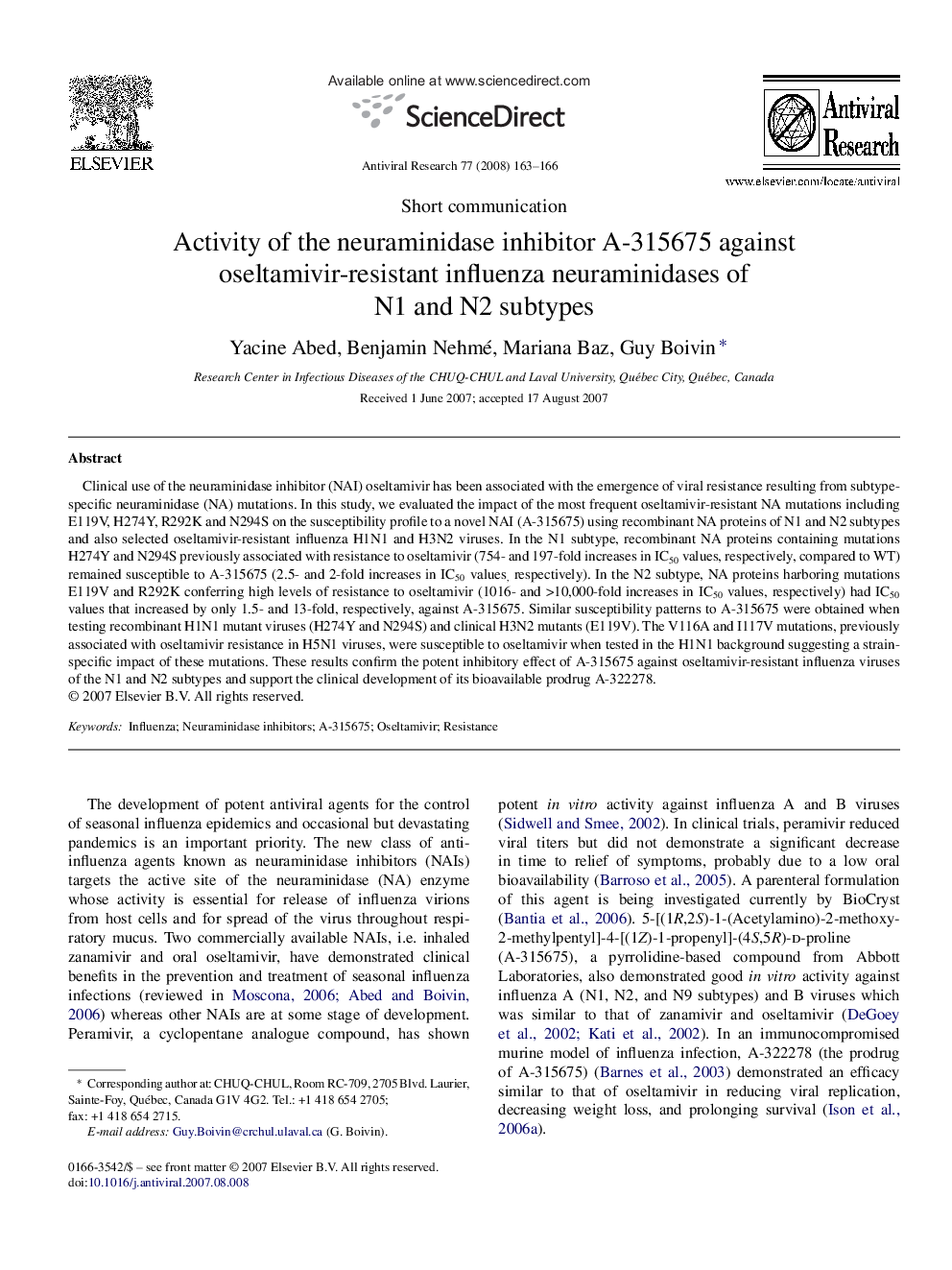| Article ID | Journal | Published Year | Pages | File Type |
|---|---|---|---|---|
| 2511028 | Antiviral Research | 2008 | 4 Pages |
Clinical use of the neuraminidase inhibitor (NAI) oseltamivir has been associated with the emergence of viral resistance resulting from subtype-specific neuraminidase (NA) mutations. In this study, we evaluated the impact of the most frequent oseltamivir-resistant NA mutations including E119V, H274Y, R292K and N294S on the susceptibility profile to a novel NAI (A-315675) using recombinant NA proteins of N1 and N2 subtypes and also selected oseltamivir-resistant influenza H1N1 and H3N2 viruses. In the N1 subtype, recombinant NA proteins containing mutations H274Y and N294S previously associated with resistance to oseltamivir (754- and 197-fold increases in IC50 values, respectively, compared to WT) remained susceptible to A-315675 (2.5- and 2-fold increases in IC50 values, respectively). In the N2 subtype, NA proteins harboring mutations E119V and R292K conferring high levels of resistance to oseltamivir (1016- and >10,000-fold increases in IC50 values, respectively) had IC50 values that increased by only 1.5- and 13-fold, respectively, against A-315675. Similar susceptibility patterns to A-315675 were obtained when testing recombinant H1N1 mutant viruses (H274Y and N294S) and clinical H3N2 mutants (E119V). The V116A and I117V mutations, previously associated with oseltamivir resistance in H5N1 viruses, were susceptible to oseltamivir when tested in the H1N1 background suggesting a strain-specific impact of these mutations. These results confirm the potent inhibitory effect of A-315675 against oseltamivir-resistant influenza viruses of the N1 and N2 subtypes and support the clinical development of its bioavailable prodrug A-322278.
